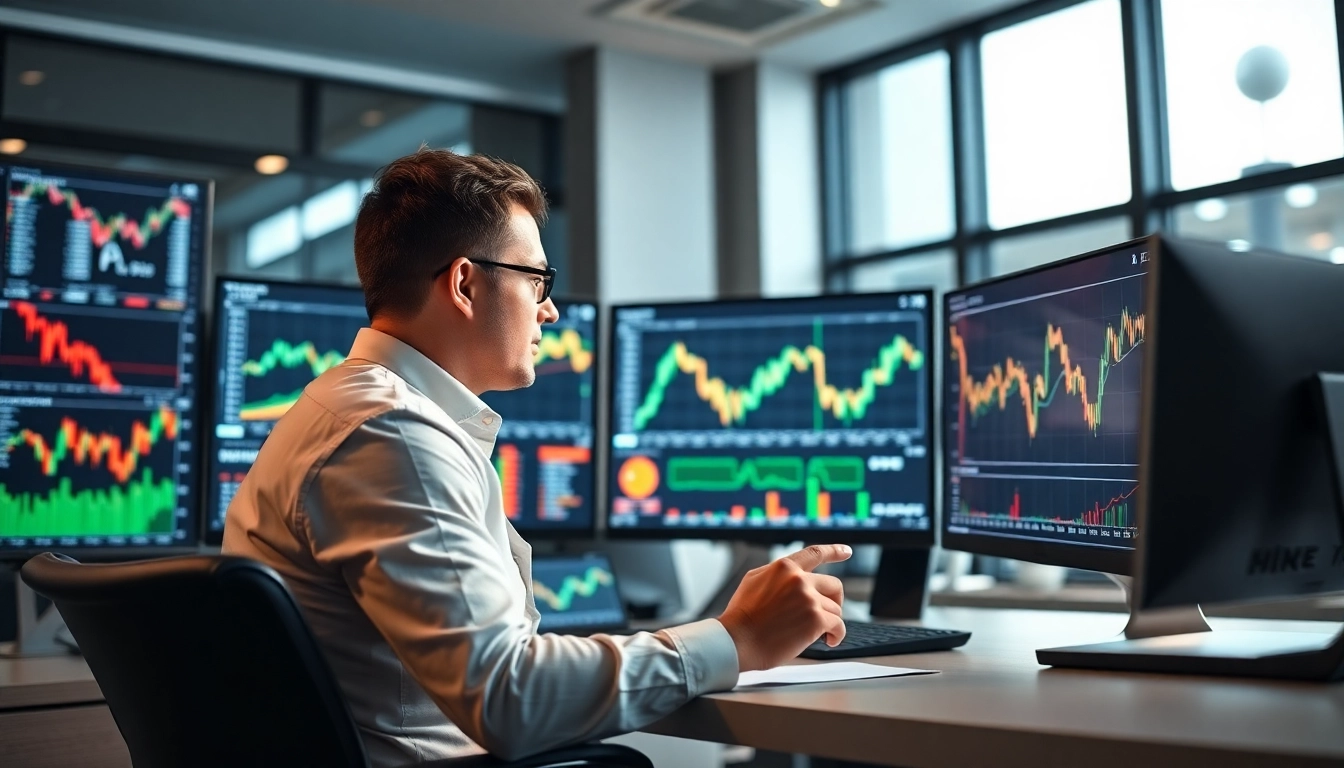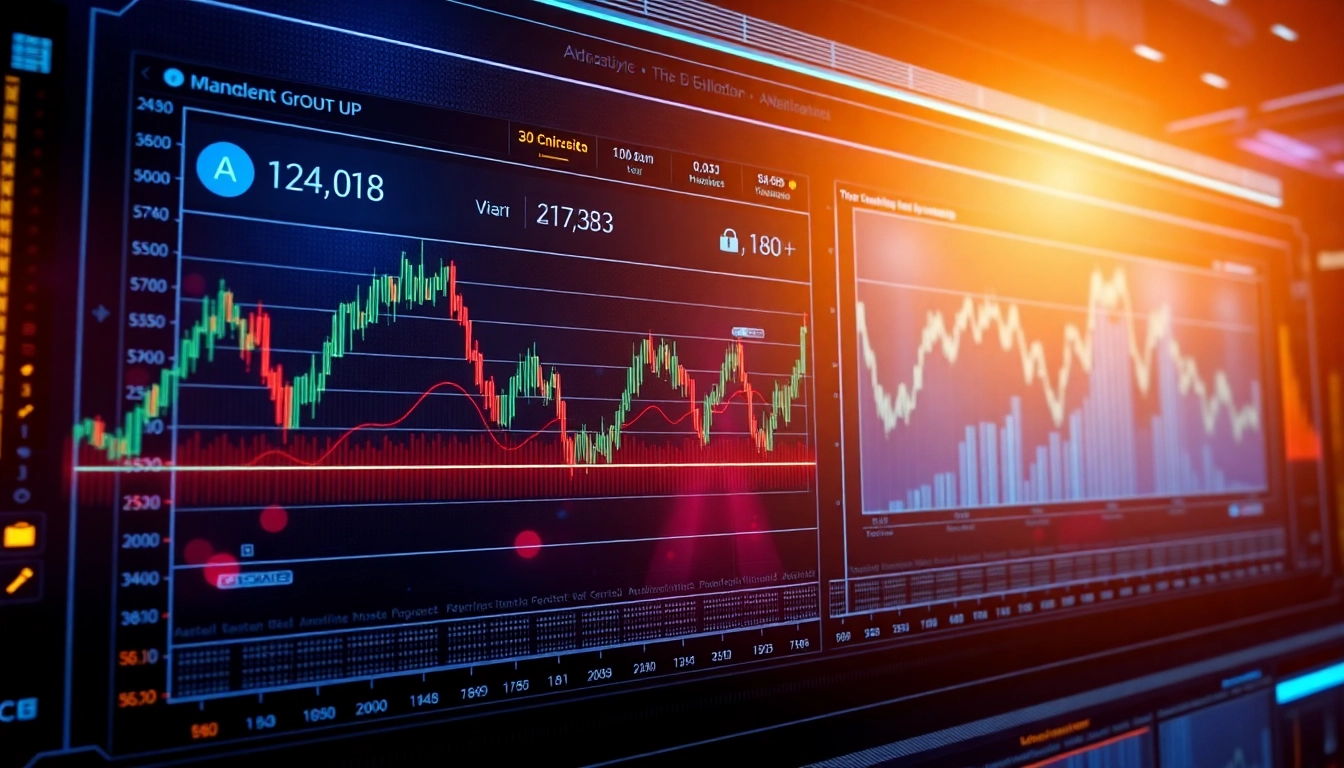Deciphering Current Market Movements: A Deep Dive into Investment News
The financial landscape continues to exhibit a mosaic of signals, reflecting a complex interplay of macroeconomic factors, geopolitical developments, and market sentiment. Recently, Investment News has highlighted the growing volatility across global stock markets, where mixed performances are now the norm. Analyzing these movements requires understanding both fundamental drivers and technical indicators that influence investor behavior. This article explores the latest trends, strategies to manage volatility, and insights into making informed investment decisions amid this dynamic environment.
Analyzing Market Index Movements and Key Drivers
The recent close of European shares marginally higher at 0.17%, with the pan-European STOXX 600 reaching 551.07, exemplifies how markets are responding cautiously to a mixture of economic data and geopolitical uncertainties. In the United States, futures remain steady, although the overall sentiment is influenced heavily by the ongoing debate around Federal Reserve policies. Key drivers include inflation fears, labor market data, and geopolitical tensions, particularly concerning US-China relations and energy prices.
Technical analysis reveals that major indices are observing critical trendlines. For instance, Bitcoin’s bullish potential hinges on the 200-week moving average remaining intact, offering clues about broader risk appetite. Investors are increasingly turning to such technical signals to supplement fundamental data, aiding in timing entries and exits in volatile markets.
Impact of Global Economic Factors on Stock Performance
The global economy exerts profound influence on stock performance. Recent US labor data, which indicated resilience in employment figures, has propelled Treasury yields higher and affected investor expectations regarding future rate hikes. Conversely, declining oil prices—despite weekly gains—reflect ongoing concerns over US-Sino trade dynamics and China’s economic health, influencing resource stocks and energy sectors globally.
On the European side, moderate gains were underpinned by defence stocks and positive economic indicators, but risks remain from inflationary pressures and potential monetary policy tightening. These fundamental factors highlight the importance of macroeconomic analytics in portfolio management.
Strategies to Navigate Volatility in Investment News
Navigating a landscape characterized by mixed signals demands robust strategies. Diversification remains paramount—spreading investments across sectors, geographic regions, and asset classes mitigates specific risks. Additionally, employing hedging techniques such as options and futures can protect portfolios against downside swings.
Investors should also adopt a disciplined approach to rebalancing, ensuring portfolios remain aligned with evolving risk tolerances and market conditions. Emphasizing quality stocks with strong balance sheets and resilient earnings can cushion against abrupt downturns. Furthermore, embracing technological tools like AI-driven analytics enhances predictive capabilities, enabling proactive adjustments.
Gold Prices Reach New Heights: What Investors Need to Know
Factors Contributing to Gold’s Historic Price Surge
Gold recently soared past $3,500 per ounce, reaching a historic high driven by multiple factors. Heightened inflation concerns, currency fluctuations, and geopolitical tensions have all strengthened gold’s appeal as a safe haven investment. Notably, US inflation data in focus has prompted investors to seek refuge in gold as part of a broader risk mitigation strategy.
How Gold Acts as a Safe Haven Amid Market Fluctuations
As markets exhibit signs of volatility, gold’s intrinsic value and global recognition underpin its status as a hedge. Its inverse correlation with the US dollar enhances its attractiveness during periods of dollar weakness, which we are witnessing amid hopes for a U.S. rate cut and external geopolitical pressures. Gold’s liquidity and historical resilience make it a vital component in diversified portfolios.
Tips for Incorporating Gold into Your Investment Portfolio
To effectively incorporate gold, investors should consider both physical and digital forms. Physical gold (bars, coins) offers tangible security, while ETFs and mining stocks provide liquidity and easier management. Allocating 5-10% of a diversified portfolio to gold can reduce overall risk exposure. Furthermore, timing is crucial; analysts recommend accumulating during dips and when geopolitical tensions rise, ensuring strategic entry points.
European and U.S. Market Dynamics and Currency Movements
European Shares Close Marginally Higher: Analysis and Outlook
The modest rise of European shares, supported by defense stocks and optimism over economic reopening, indicates cautious optimism among European investors. The STOXX 600’s stabilization reflects a balancing act between inflation concerns and accommodative monetary policies by the European Central Bank.
The Dollar’s Decline and Implications for Investors
The US dollar’s slight decline of 0.04% against the yen and a 0.25% rise against the euro signals shifting global currency dynamics. A weaker dollar benefits commodity prices, especially gold and oil, and can boost exports for dollar-denominated companies. For international investors, tracking currency trends is essential for hedging and optimizing returns.
Monitoring Currency Trends to Optimize Investment Strategies
Utilizing forward contracts, currency ETFs, and options can protect portfolios from adverse currency movements. Understanding macroeconomic policies, such as US rate cut expectations and ECB strategies, allows investors to anticipate shifts that influence asset prices and cross-border investment flows.
Market Insights on Cryptocurrency and Blockchain Developments
Latest Trends in Crypto Trading and Investment Opportunities
Despite fluctuations, the cryptocurrency market continues to evolve rapidly. Bitcoin and Ether remain relatively flat amid SEC regulatory scrutiny, yet they retain potential for significant upside if prominent trendlines, like the 200-week moving average, remain intact. MicroStrategy and Robinhood’s recent profitability highlights institutional interest, boosting confidence in digital assets.
Impact of SEC Actions and Regulation on Digital Currency Markets
Regulatory actions, such as SEC enforcement and ongoing dialogues about securities classifications, have introduced volatility but also clarity in the long term. A clear legal framework could catalyze mainstream adoption and institutional investment, propelling cryptocurrencies into a new era of maturity.
Future Predictions for Bitcoin, Ether, and Altcoins
Analysts forecast that Bitcoin and Ether will likely witness bullish runs if the current trendlines hold, especially with increased institutional engagement. Altcoin markets remain volatile but promising, with innovations in decentralized finance and Non-Fungible Tokens (NFTs) driving new opportunities, as market cap surpassed $9.3 billion before slowing Ether rallies.
Emerging Challenges and Opportunities in the Investment Landscape
Key Risks to Watch in the Current Economic Climate
Risks include potential inflation resurgence, geopolitical conflicts, and regulatory clampdowns. The ongoing US-Fed tension and political instability in certain regions pose threats to stable growth. Unexpected policy shifts may induce sharp market corrections, underscoring the need for vigilant risk assessment.
Innovative Investment Approaches and Asset Diversification
Embracing alternative assets like cryptocurrencies, NFTs, and infrastructure projects offers diversification benefits. Incorporating AI-driven analytics and real-time data ensures adaptive strategies. Exploring emerging markets and thematic investments, such as green energy or technological innovation, provides growth avenues amid volatility.
Measuring Performance and Making Data-Driven Decisions
Utilizing advanced analytics, including real-time dashboards and predictive modeling, can enhance decision-making accuracy. Key performance indicators such as risk-adjusted returns, drawdown analysis, and volatility indices serve as benchmarks. Regular portfolio review aligned with market metrics ensures sustained performance.




